The central part of the Nato line was held by an Anglo-Belgian force of some 7000 points. The force comprised elements of the Belgian 10th Reserve Mechanised Brigade commanded by Colonel Poirot and the 13th/18th Royal Hussars Battlegroup lead by a very junior officer, a Captain "George" Hastings.
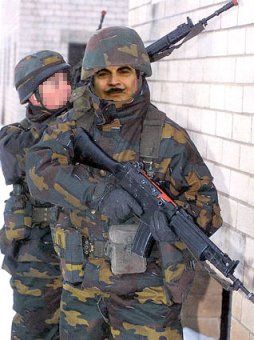 |
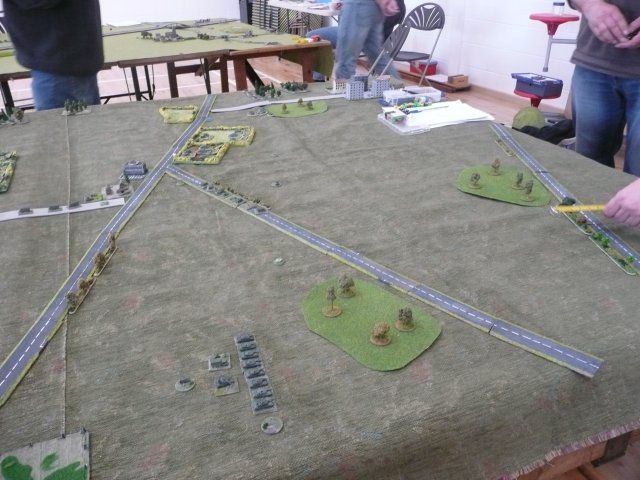 | 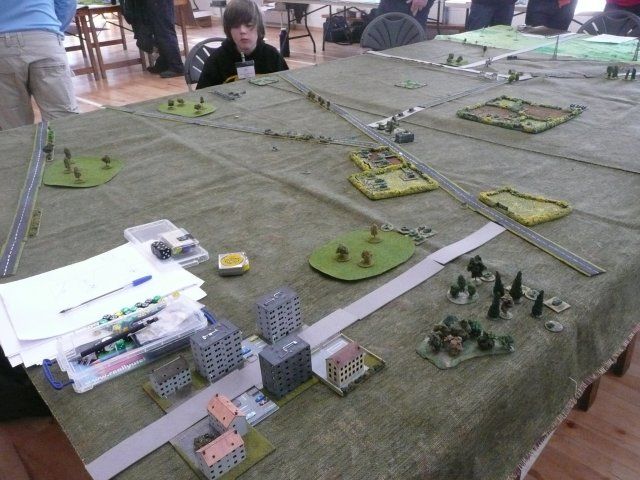 |
On the right Captain Hastings, seen in the right-hand picture sitting down admiring his tanks, deployed his Challenger 1s as far forward as he could hoping to take up a defensive position in the wood in front of the tanks. His infantry were dug-in along the road in the centre of the table.
The Belgians extended the line to the left with an infantry company and half the tank battalion in the fields by the road junction. Another company sat ready to advance into the woods in front of Kleve, a local administrative centre judging by the paperwork.
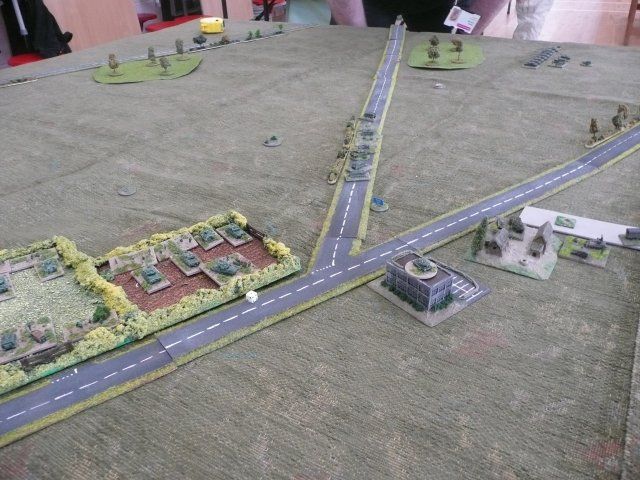 |  |
The final Belgian infantry company provided support to the rear of the centre with the remaining half-battalion of tanks held in a wood on the left flank.
Due to the size of the tables and the fact that there were rear areas the mechanism for off-table artillery was that off-table artillery placed in the rear area could only target units in the nearest half of the 3 main tables. In order to target enemy units on the far half of the main table then the artillery had to be deployed on the table itself.
Therefore as the Anglo-Belgian force had deployed so far forward the off-board artillery was placed in Venlo in order to hit the Soviets as they came onto the table. The playing card in the picture represent the number of aircraft allocated to air superiority for the Nato half of the table.
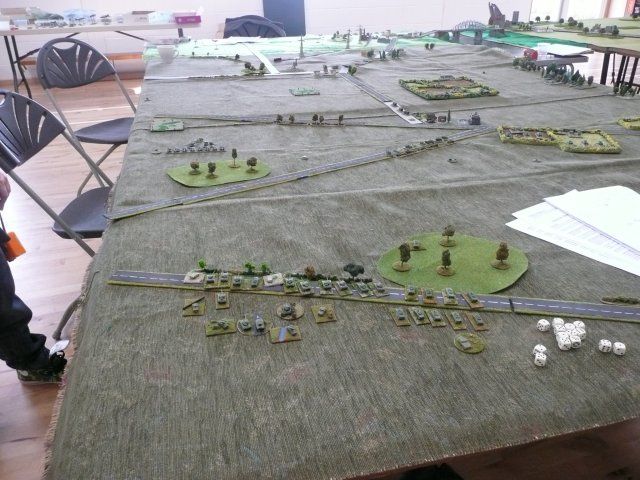 | 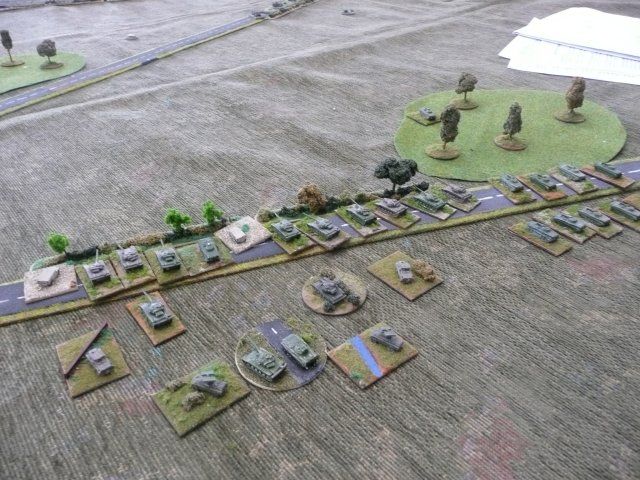 |
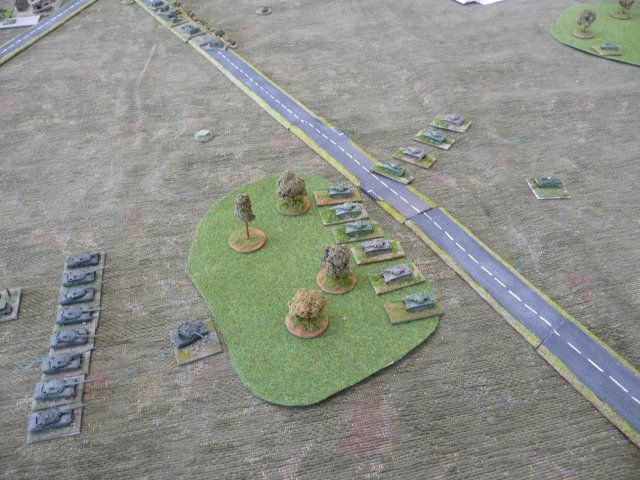 |  |
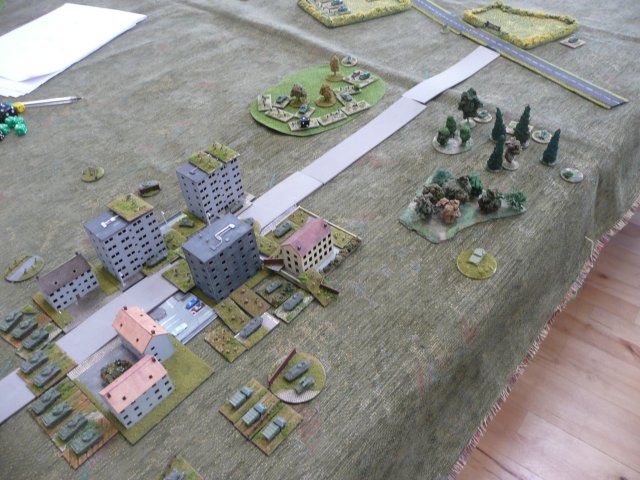 | 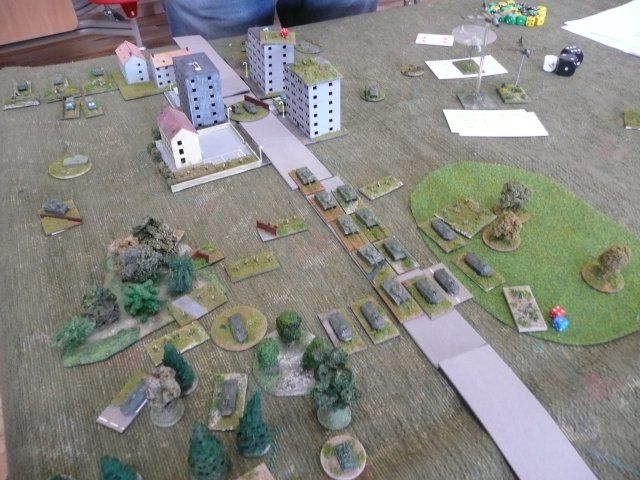 |
 | 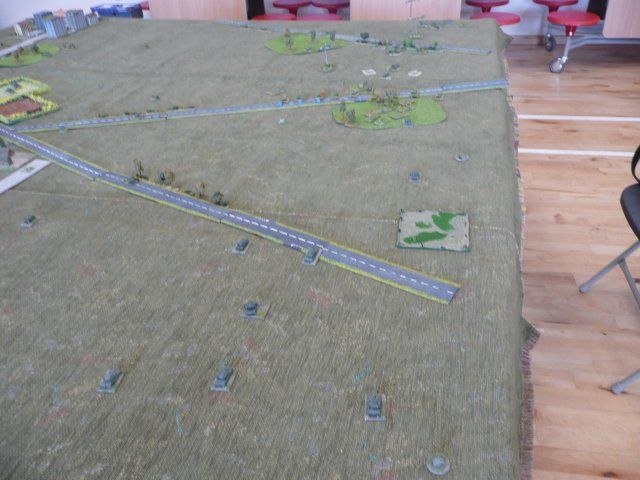 |
Leaving small rear-guards, such as the Leopards in the fields, to hold the Soviets advancing on a broad front from Kleeve, the allies retreated towards Venlo hoping to arrive before the Soviets crossed the bridge.
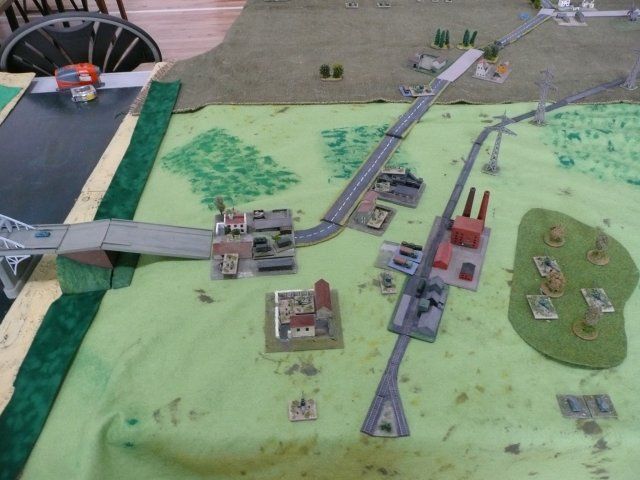 | 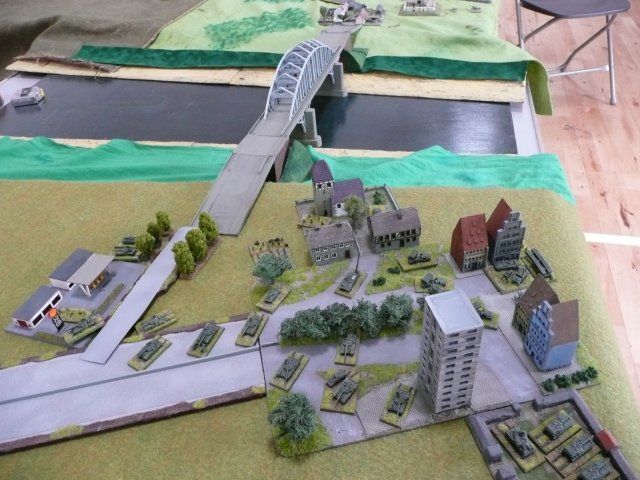 |
 |  |
North of Venlo the Anglo-Belgian forces suffered another blow as the British infantry and Challengers disintegrated under accurate Soviet tank and ATGW fire and started a full retreat.
Trapped between the Soviet forces at Kleeve and Venlo the Belgians deployed around Geldern and entered into cease-fire negotiations with the new rulers of western Europe. In CWC terms the Belgians had to lose another 3 units before breaking which given the amount of Soviet firepower available would have only been a turn away.
Game over. The Soviets were victorious on not only the left and central tables but also on the Nato rear table as half the troops from the attack west of the Maas continued south along the A73. On the right flank the US forces still held Duisburg.
With hindsight I would have deploy the Belgian and British infantry on both sides of the Maas at Venlo to hold the town and support the Nato troops on the left flank and just used the Challengers and Leopards to hold the Soviet advance from Kleeve. Also with hindsight I should have played CWC more than once before coming along to the event.
Well what a cracking game that was and combined with the pies and beer to be had at our B&B, the Royal Hotel, and the excellent company it all added up to a most enjoyable weekend.
My thanks to Richard for organising it, to Stuart for umpiring and to everyone for playing especially George. He is only 12 and deserves a medal for being up for it for 2 days - undoubtedly a wargamer in the making.
I look forward to Arctic Strike in 2013
There are a few more photos here



Great AAR Alan,
ReplyDeleteLove the Colonel Poirot picture
Richard P